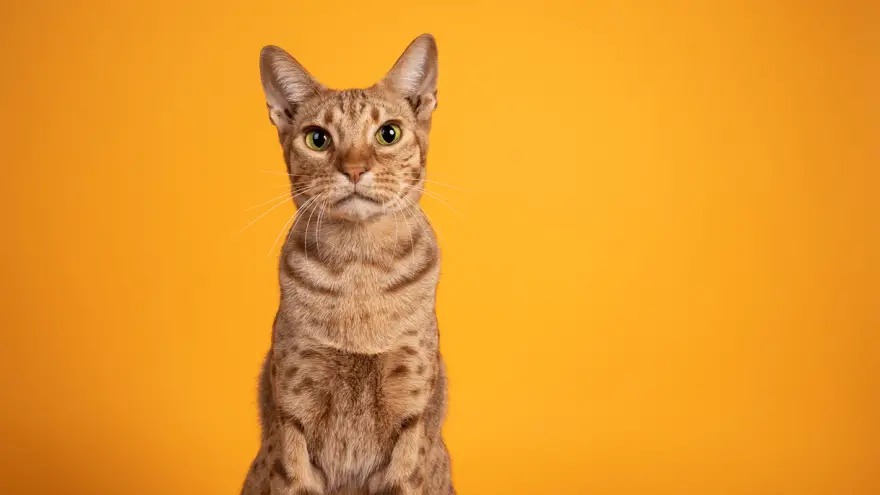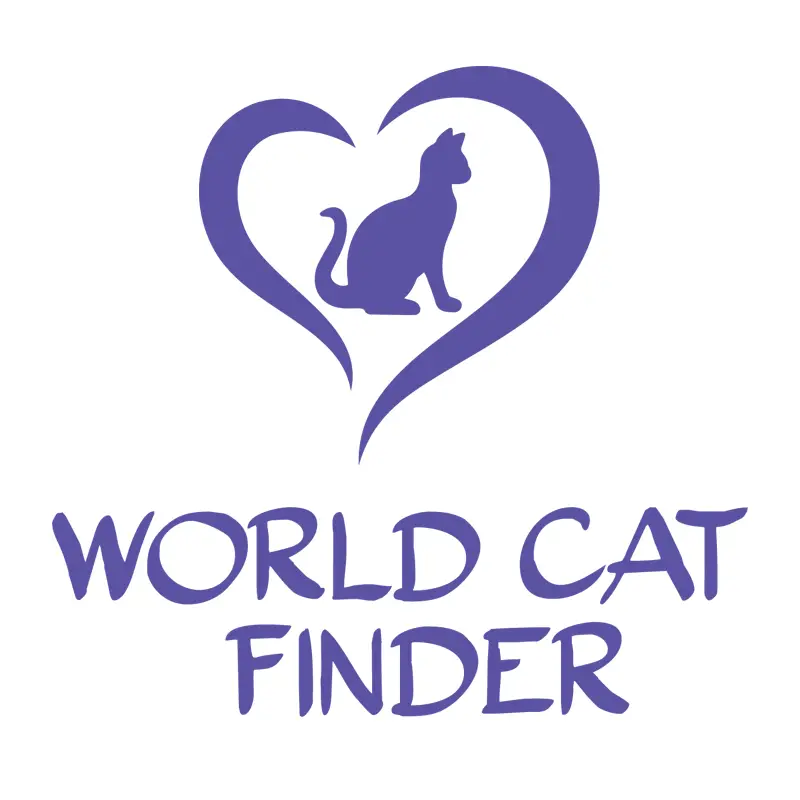
Ocicat
If you love domestic cats that look a bit wild, you will absolutely love the Ocicat. These spotted kittens are absolutely stunning. If you get one, you will have a feeling of sharing your home with a tiny wild predator. However, these cats are anything but wild. They are fantastic companions that came to life as a happy accident. The Ocicat might be named after the Ocelot, a wild South American felid, but they are nothing like them. If you love spotted cats, here’s what you should know about the gorgeous Ocicat.

Length:
-

Weight:
6-15 lb

Origin:
USA

Life Expectancy:
10-15 years
Breed History
The Ocicat is not a naturally occurring breed. In fact, they were created by a cat breeder named Virginia Daly. One of the things we love about the “artificially” created cat breeds is that their history is often well documented. That is precisely the case with the Ocicat. The first cross that ended with the Ocicat as a result happened in 1964. Virginia Daly wanted to achieve Abyssinian points in her Siamese cats.
She produced kittens that looked like Abyssinians, which she crossed to Siamese again. One litter produced a cat with an ivory-colored coat dotted with gold spots. The kitten was named Tonga, and that was the first Ocicat ever produced. She repeated the same types of breeding and produced more spotted kittens. Later, she added the British Shorthair for size and silver color. Those kittens were the foundation stock for the new breed.
Cat Breed Characteristics
The first thing anyone will spot on Ocicat is its fabulous fur. However, that is not the only thing breeders focus on. Here are the most dominant Ocicat characteristics we will focus on, which future owners should be familiar with.
Coat
Besides their trademarked spots, the Ocicat has an overall short, smooth coat that is very soft. It has a single coat that makes it more suited for warmer climates. The coat is pretty easy to groom, so you shouldn’t have too many problems with that.

Coat color
The most dominant feature of the Ocicat is its color. All Ocicats should have spots, and there are 12 possible colors these cats come in. These cats have an “agouti” coat. That means each hair has several colors on it. All coat colors should follow a pattern of dark thumbprint-shaped spots on a light background.
Size
The Ocicat is considered a medium-to-large cat. Most of these cats are 6 - 15 pounds and can appear surprisingly heavy for their size.
Temperament
A cat should offer more than just an attractive appearance. Their looks are important, but cats should primarily be companions, so their temperaments are crucial. Luckily, the Ocicat loves its people. These cats are playful and will gladly follow you around your house. In fact, they might want to hitch a ride on your shoulders. They are a combination of Siamese and Abyssinian characters, so you can expect an intelligent cat that loves retrieving toys or even walking on a leash. They are relatively active and will do well in households that provide them with necessary daily activity.
Health
No matter which pureblooded cat breed you have at home, they are most likely prone to specific health issues. The Ocicat is no different. Here are some of the potential health issues you and your vet should keep an eye on;
- Progressive retinal atrophy - This is an eye issue that should be controlled, especially in older cats.
- Hypertrophic cardiomyopathy - This is not specific to the Ocicat. Still, it is a disease that the cat should be tested for. It is the most common heart disease in cats.
- Periodontal disease - Disease of gum and teeth. Oral hygiene is very important for Ocicats.
- Renal or liver amyloidosis - The deposition of amyloid in the liver or kidneys. The fibrous protein will disrupt the normal functioning of the affected organs.
World Cat Finder Team

Updated at21.12.2021.

Share